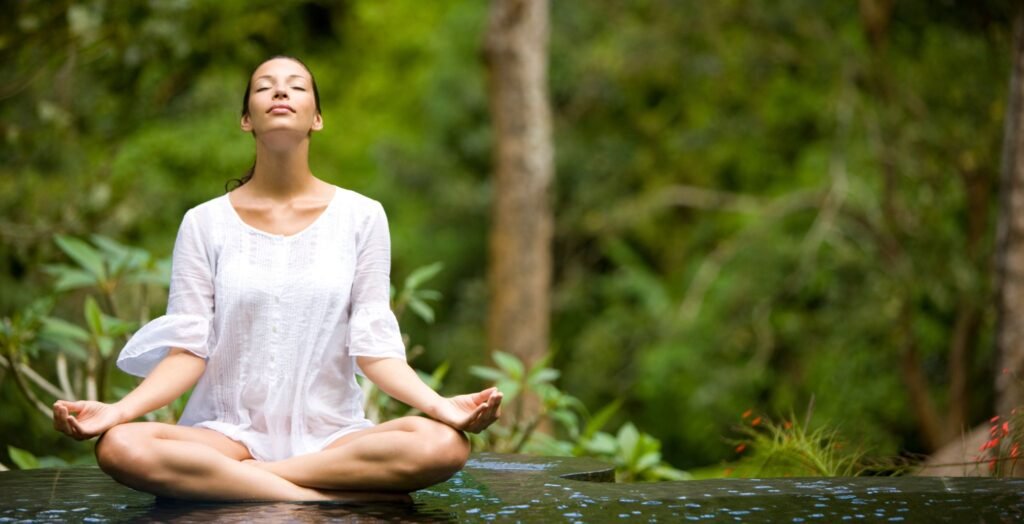Yoga is more than just a physical exercise—it is a powerful mind-body practice that nurtures both mental and physical well-being. When practiced regularly, yoga can significantly boost brain function, sharpen focus, and improve memory power. It offers a natural and holistic approach to enhancing cognitive abilities by integrating movement, breath control, and mindfulness.
Padmasana (Lotus Pose)
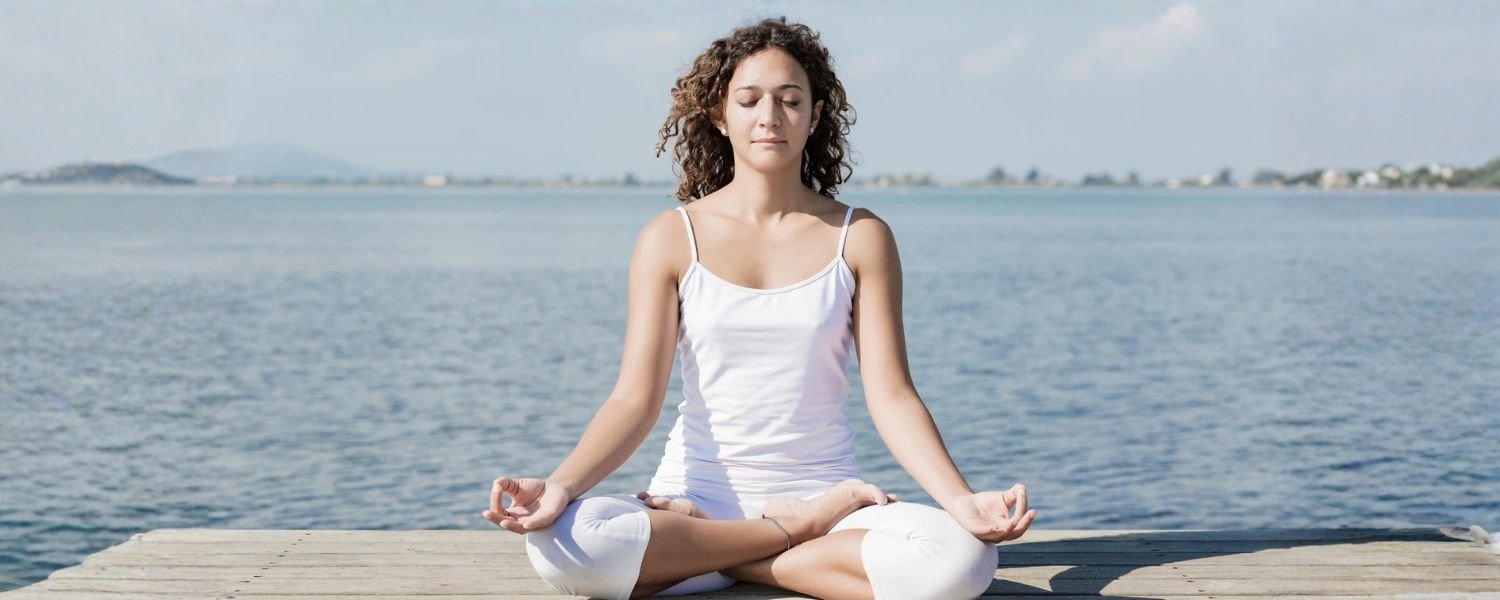
Padmasana is a traditional seated yoga posture that helps calm the mind and reduce anxiety, making it an ideal asana for students to enhance focus and mental clarity.
Benefits of Padmasana:
- Promotes relaxation and reduces stress: The meditative nature of the pose helps release tension and calms the nervous system.
- Improves focus and mental clarity: Enhances concentration by channeling mental energy and improving mindfulness.
- Boosts posture and flexibility: Opens up the hips and strengthens the spine, contributing to better posture.
How to Perform Padmasana:
- Sit cross-legged with your spine straight and shoulders relaxed.
- Place each foot on the opposite thigh with the soles facing upward.
- Rest your hands on your knees with palms facing up (in Gyan Mudra).
- Close your eyes and focus on your breathing, inhaling and exhaling deeply.
- Maintain this position for 5-10 minutes, concentrating on your breath.
Shoulder Stand (Sarvangasana)

Sarvangasana, known as the ‘queen of asanas,’ offers full-body benefits, particularly enhancing brain function by increasing blood circulation to the head. It is a powerful pose for mental clarity and relaxation.
Benefits of Sarvangasana:
- Increases blood flow to the brain: Enhances circulation, providing more oxygen to the brain, which sharpens focus.
- Improves concentration and reduces insomnia: Helps regulate the nervous system, relieving anxiety and promoting better sleep.
- Strengthens the neck and shoulders: Builds core and upper body strength.
How to Perform Sarvangasana:
- Lie flat on your back on a yoga mat with arms by your sides.
- Slowly lift your legs upward towards the ceiling, keeping them straight.
- Support your lower back with your hands and raise your torso, aligning it vertically with your legs.
- Keep your chin tucked into your chest, forming a straight line from shoulders to toes.
- Hold the pose for 30 seconds to 1 minute, breathing deeply.
- Gently release and return to the starting position.
Bhramari Pranayama (Bee Breath)
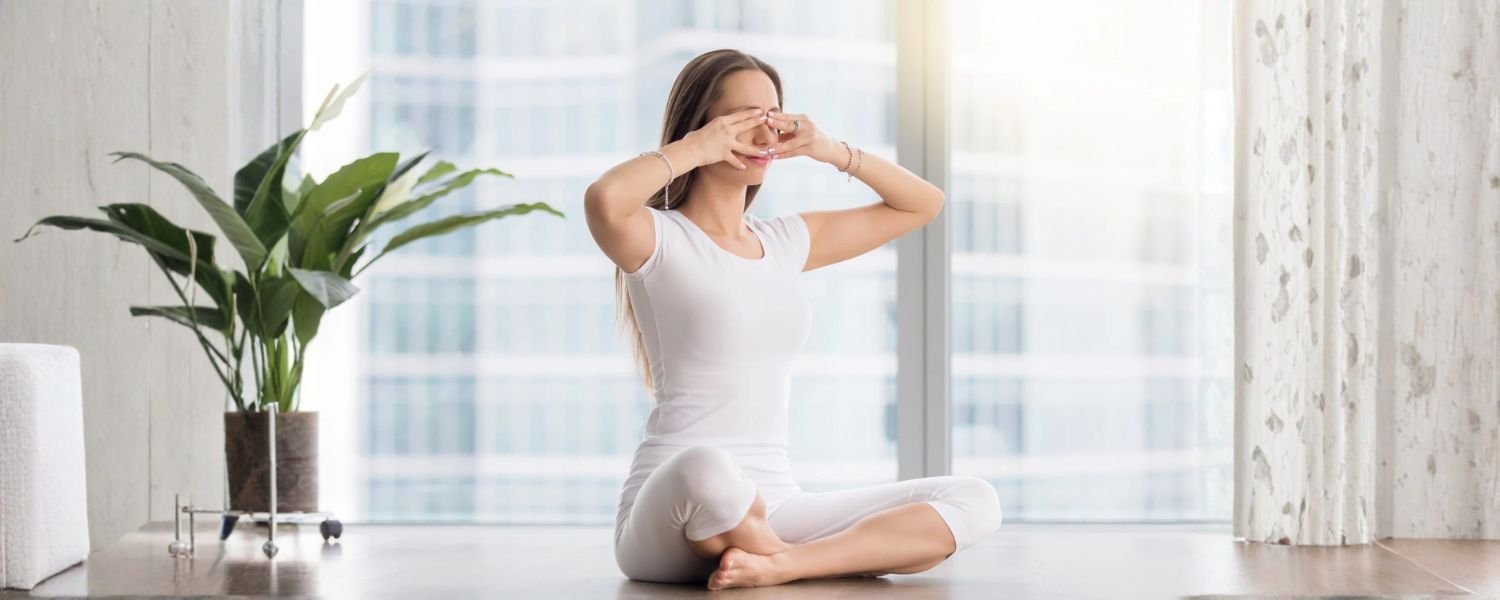
Bhramari Pranayama is a calming breathing technique that uses a humming sound to relieve mental tension and reduce fatigue. It is particularly beneficial for improving memory and cognitive function, making it ideal for students.
Benefits of Bhramari Pranayama:
- Reduces anxiety and stress: The vibrations from humming calm the nerves and promote relaxation.
- Improves memory and cognitive function: Enhances brain activity by increasing oxygen supply.
- Promotes emotional balance: Helps regulate mood and reduce feelings of anger and frustration.
How to Perform Bhramari Pranayama:
- Sit in a comfortable, upright position with your spine straight and eyes closed.
- Place your hands on your knees or cover your ears with your thumbs and rest your fingers on your forehead (Shanmukhi Mudra).
- Inhale deeply through your nose.
- Exhale slowly, producing a humming sound similar to a bee’s buzz.
- Focus on the vibration and the sound of your breath.
- Repeat this process for 5-7 minutes, ensuring slow, steady breaths.
Vrikshasana (Tree Pose)

Vrikshasana, or Tree Pose, is a balancing yoga posture that enhances physical and mental stability. Inspired by the steady and grounded nature of a tree, this asana is beneficial for improving focus, posture, and overall body strength.
Benefits:
- Boosts concentration and stability: Balancing on one leg requires focus and mindfulness, helping to improve mental clarity and concentration.
- Strengthens leg muscles: The pose engages and tones the leg muscles, including calves, thighs, and ankles.
- Improves posture and body awareness: It encourages an upright, balanced posture, enhancing body alignment and coordination.
How to Perform:
- Stand straight with your feet together and arms at your sides.
- Shift your weight onto your left leg and lift your right foot.
- Place the sole of your right foot on the inner thigh of your left leg. Avoid resting it on the knee.
- Bring your palms together in a prayer position (Anjali Mudra) above your head.
- Keep your gaze fixed on a point in front of you to maintain balance.
- Hold the position for 30 seconds to 1 minute, breathing deeply.
- Slowly lower your foot and switch sides.
Shavasana (Corpse Pose)
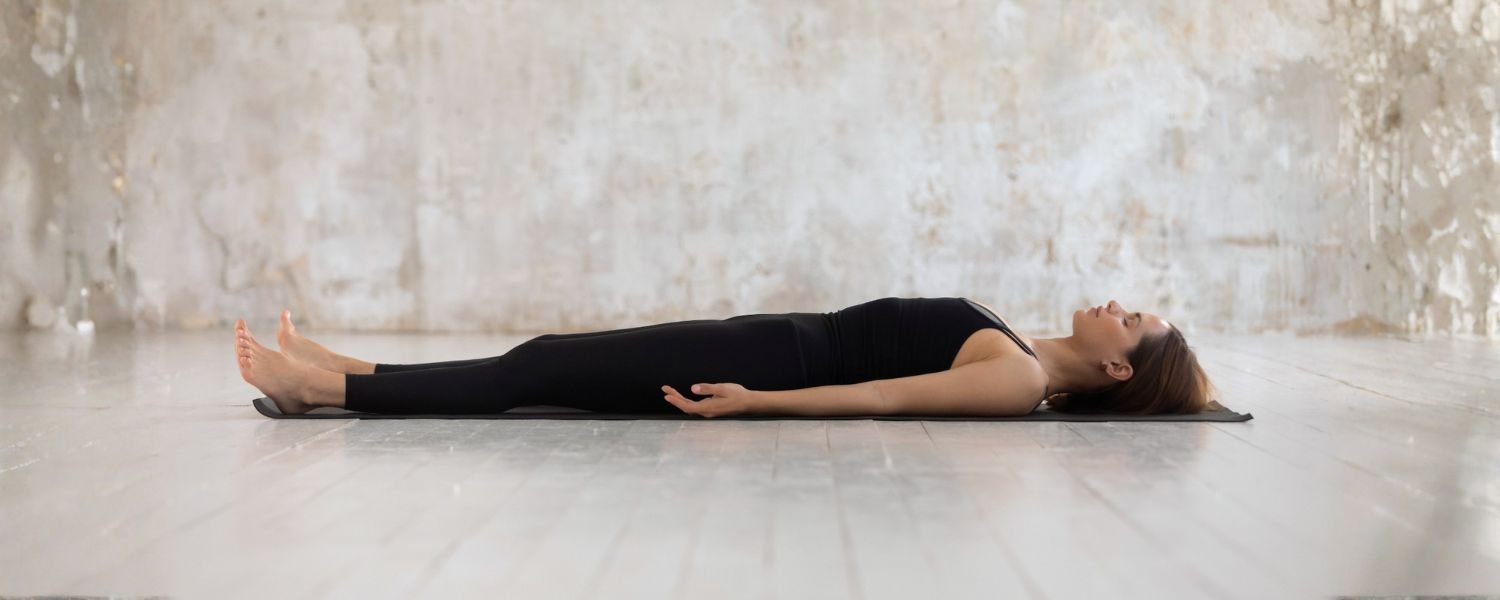
Shavasana, or Corpse Pose, is a restorative yoga posture designed to relax the body and calm the mind. This pose is typically practiced at the end of a yoga session to absorb the benefits of previous asanas and promote deep relaxation.
Benefits:
- Reduces mental fatigue and improves focus: By calming the mind and relieving tension, Shavasana helps increase concentration.
- Relaxes the nervous system: It activates the parasympathetic nervous system, promoting a state of deep relaxation.
- Releases stress and anxiety: Deep breathing in this pose helps clear the mind and reduce physical tension.
How to Perform:
- Lie flat on your back on a yoga mat with your legs slightly apart.
- Place your arms by your sides, palms facing upwards.
- Close your eyes and take slow, deep breaths.
- Focus on each part of your body, releasing tension from head to toe.
- Stay in the pose for 5 to 10 minutes, maintaining steady, natural breathing.
- To finish, gently wiggle your fingers and toes, stretch your body, and slowly roll to one side before sitting up.
Seated Forward Bend (Paschimottanasana)
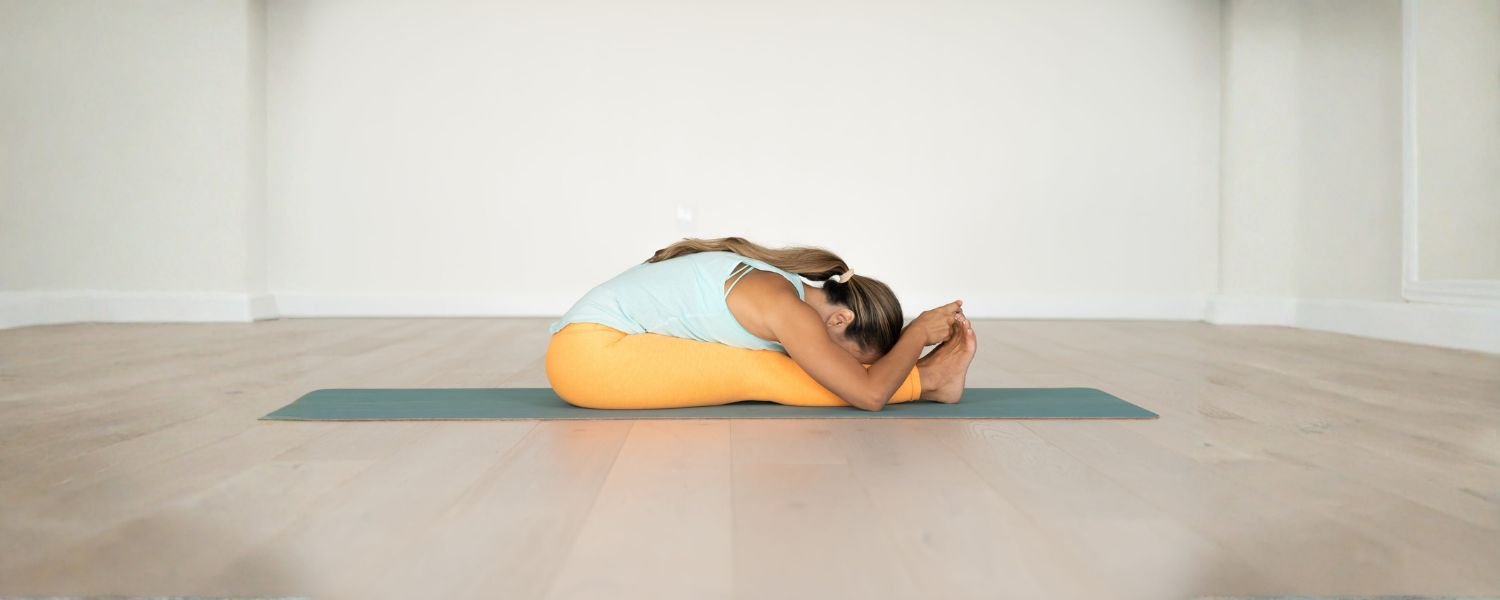
Paschimottanasana, or Seated Forward Bend, is a classic yoga pose that provides a deep stretch for the spine and legs while calming the mind. It is known for its ability to relieve stress and improve focus.
Benefits:
- Reduces anxiety and increases focus: The forward bend calms the nervous system, easing mental tension and enhancing concentration.
- Improves blood circulation to the brain: The posture increases blood flow to the head, nourishing the brain and improving mental clarity.
- Stretches the spine and hamstrings: It lengthens and strengthens the back muscles, reducing stiffness.
How to Perform:
- Sit on the floor with your legs extended straight in front of you. Keep your spine tall.
- Inhale deeply, raising your arms above your head.
- Exhale and bend forward from your hips, reaching for your toes. If you can’t reach your toes, hold your shins or ankles.
- Keep your back as straight as possible to avoid straining your lower back.
- Relax your neck and let your head drop towards your legs.
- Hold the position for 30 seconds to 1 minute, breathing deeply.
- Slowly rise back to a seated position as you inhale.
Surya Namaskar (Sun Salutation)
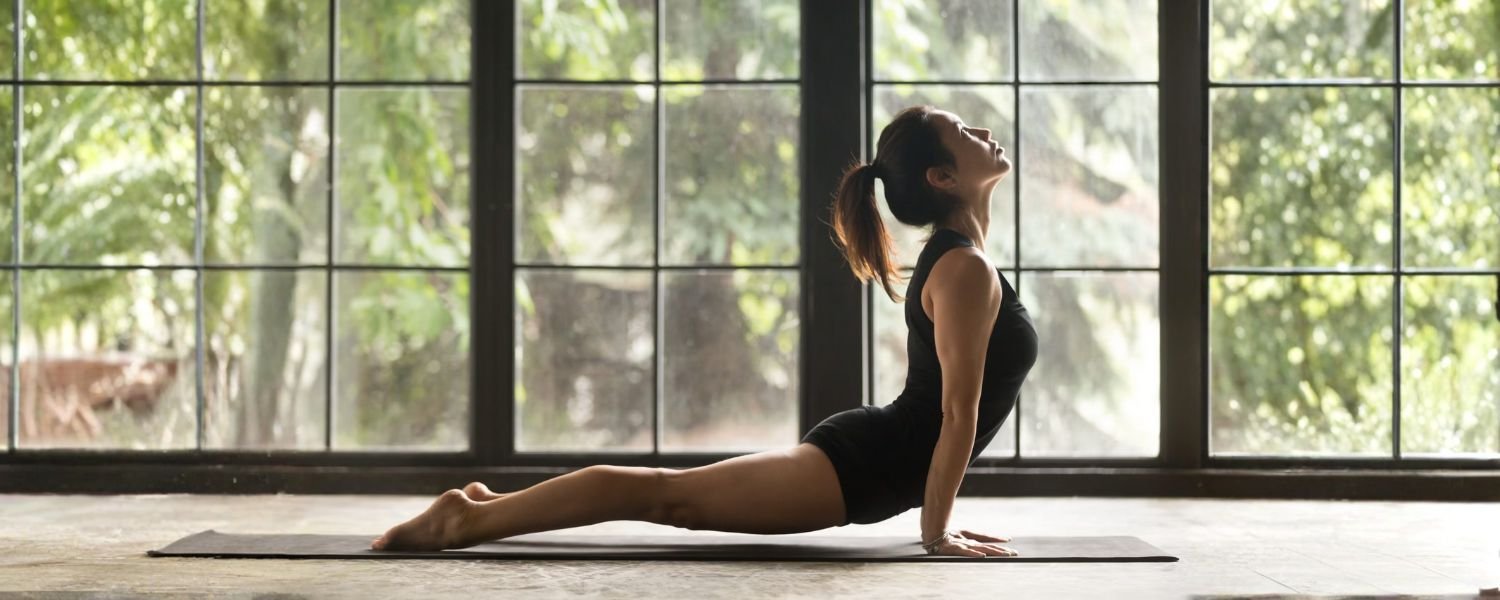
Surya Namaskar, or Sun Salutation, is a dynamic sequence of 12 yoga postures that engage the entire body, promoting physical and mental well-being. This practice enhances energy levels, improves blood circulation, and strengthens memory by synchronizing breath with movement.
Benefits:
- Improves blood circulation, ensuring better oxygen flow to the brain.
- Enhances focus and cognitive function, sharpening memory.
- Reduces stress and anxiety, promoting a calm and alert mind.
How to Perform:
- Begin in Pranamasana (Prayer Pose) with hands joined at the chest.
- Move into Hasta Uttanasana (Raised Arms Pose), stretching backward.
- Bend forward into Padahastasana (Hand-to-Foot Pose), touching the toes.
- Extend one leg back into Ashwa Sanchalanasana (Equestrian Pose).
- Shift to Dandasana (Plank Pose), keeping your body straight.
- Lower into Ashtanga Namaskara (Eight-Limbed Pose), bringing chest and knees to the ground.
- Lift into Bhujangasana (Cobra Pose), opening the chest.
- Move into Adho Mukha Svanasana (Downward Dog Pose), stretching the back.
- Return to Ashwa Sanchalanasana, stepping forward.
- Move back into Padahastasana.
- Lift into Hasta Uttanasana.
- Conclude in Pranamasana.
🔹 Practice 5-10 rounds daily for enhanced mental clarity and focus.
Shirsasana (Headstand)
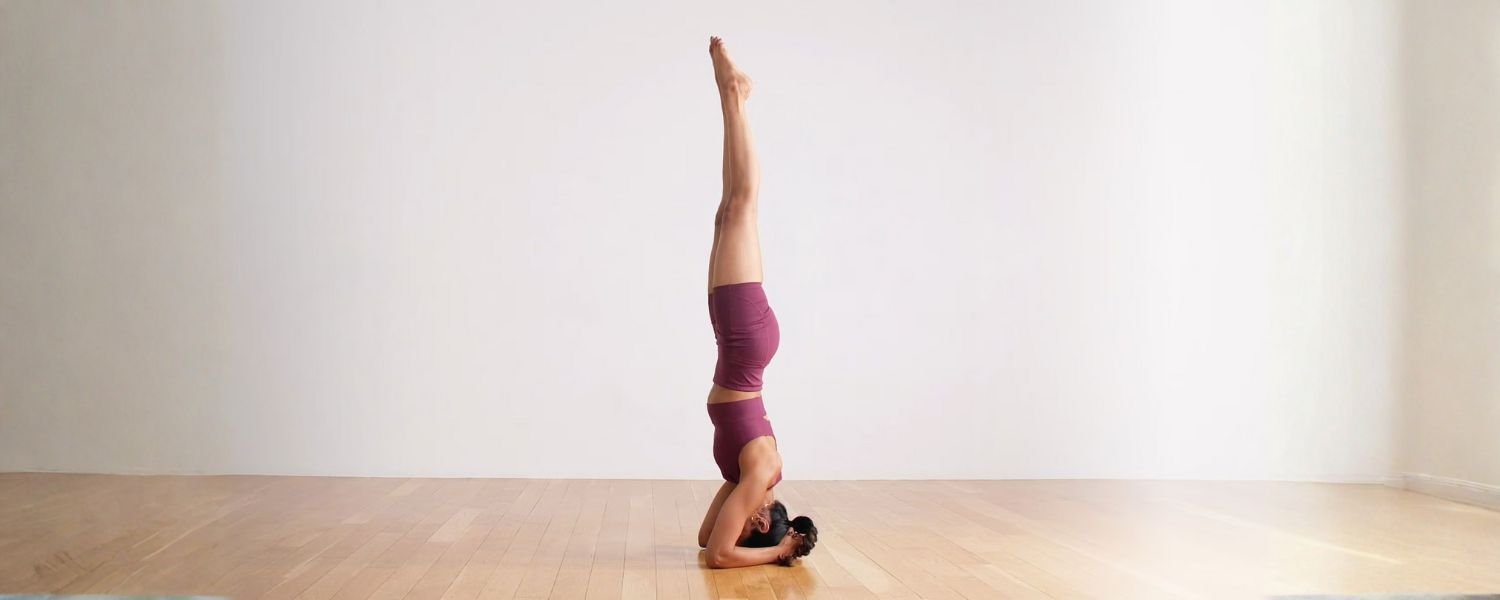
Shirsasana, often called the “King of Asanas,” is a powerful inversion that boosts blood circulation to the brain, stimulating cognitive function and improving concentration. This pose also enhances neuroplasticity, the brain’s ability to adapt and form new connections.
Benefits:
- Increases oxygen and nutrient flow to the brain, enhancing focus.
- Alleviates mental fatigue, promoting mental sharpness.
- Reduces stress and anxiety, fostering inner balance and tranquility.
How to Perform:
- Kneel on the floor and place your forearms on the ground.
- Interlock your fingers to create a stable base.
- Place your head between your hands, touching the ground.
- Gradually lift your legs off the floor, straightening them upward.
- Balance in the inverted position for 20-30 seconds.
- Lower your legs slowly and rest in Balasana (Child’s Pose).
🔹 Practice against a wall initially if you’re a beginner to build confidence.
Bhastrika Pranayama (Bellows Breath)
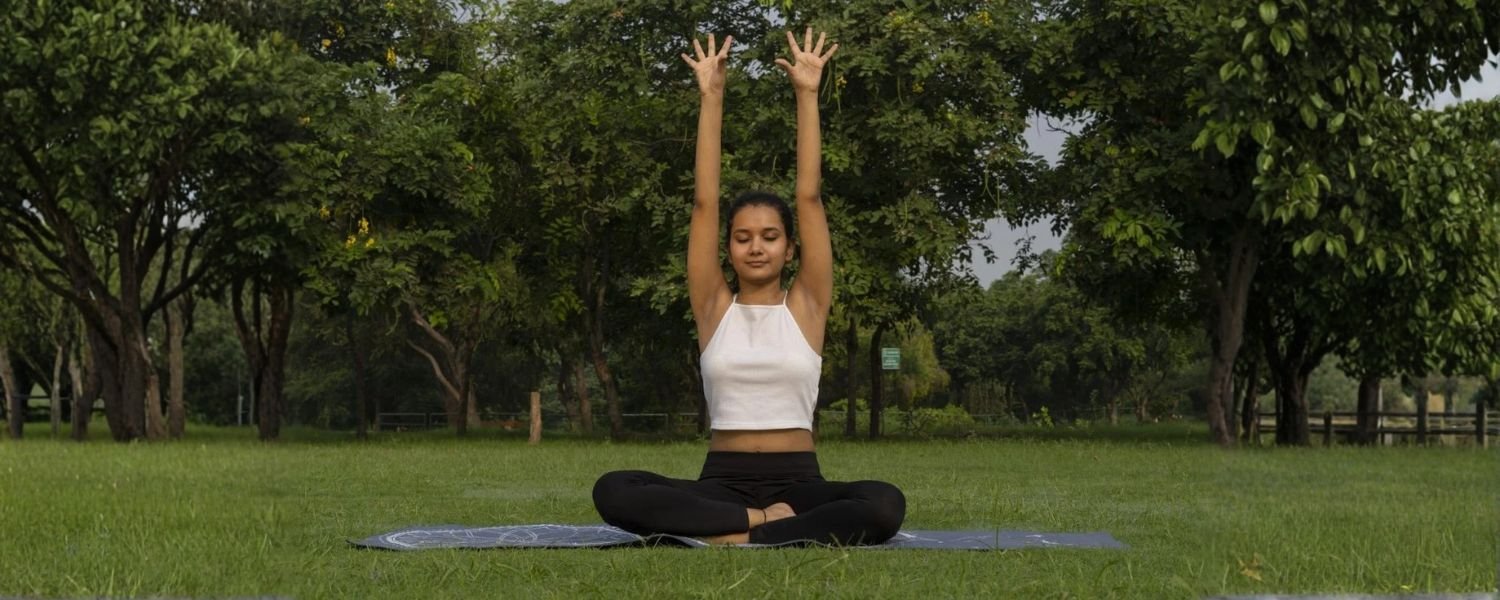
Bhastrika Pranayama is a vigorous breathing exercise that oxygenates the brain, enhancing mental clarity and concentration. The forceful inhalations and exhalations stimulate the nervous system, boosting alertness.
Benefits:
- Increases oxygen supply, promoting sharp thinking and mental agility.
- Enhances memory and concentration by reducing sluggishness.
- Energizes the mind, combating stress and fatigue.
How to Perform:
- Sit in a comfortable position with a straight spine.
- Inhale deeply and forcefully through the nose.
- Exhale forcefully, engaging your abdominal muscles.
- Continue rhythmic breathing for 2-5 minutes.
🔹 Practice in the morning for maximum mental clarity throughout the day.
Mindfulness and Meditation

Mindfulness and meditation cultivate a calm and focused mind by reducing mental clutter and enhancing awareness. By training the brain to stay present, these practices boost cognitive function and memory retention.
Benefits:
- Enhances mental clarity, reducing distractions and improving focus.
- Reduces stress and anxiety, promoting a balanced mind.
- Strengthens memory recall and cognitive processing.
Practice Techniques:
- Find a quiet space and sit comfortably.
- Close your eyes and focus on your breath or a mantra.
- If thoughts arise, gently bring your attention back to your breath.
- Practice for 5-10 minutes daily.
🔹 Incorporate mindfulness in daily activities, such as eating or walking, to improve focus naturally.
By integrating these yoga techniques and mindfulness practices into your daily routine, you can significantly improve concentration, memory, and mental clarity while reducing stress. Start with small steps and gradually increase your practice for long-lasting cognitive benefits! 🚀
How to Start a Yoga Practice for Memory and Concentration

1. Set a Routine:
Commit to practicing yoga for 20-30 minutes daily. Consistency is key to experiencing long-term benefits. Early morning is often ideal, as it sets a positive tone for the day and aligns with the body’s natural rhythms.
2. Choose a Quiet Space:
Select a peaceful, clutter-free area where you won’t be disturbed. This helps you stay fully present during your practice. You can enhance the atmosphere with soft lighting, incense, or calming music if it aids your concentration.
3. Warm-Up First:
Always begin with light stretches to prepare your body and prevent injuries. Simple movements like neck rolls, shoulder stretches, and cat-cow poses ease muscle tension and improve blood circulation.
4. Practice Focused Poses:
Incorporate asanas known for enhancing memory and focus, such as:
- Padmasana (Lotus Pose): Calms the mind and reduces restlessness.
- Vrikshasana (Tree Pose): Enhances balance and concentration.
- Sukhasana with Pranayama: Supports mental clarity through mindful breathing.
5. Stay Consistent:
Regular practice strengthens the connection between body and mind. Aim for daily sessions, even if brief, as the benefits compound over time. Keep a yoga journal to track your progress and experiences.
Significance of Yoga Practice for Memory and Concentration
1. Boosts Brain Function:
Yoga improves blood circulation and increases oxygen supply to the brain. This enhances cognitive functions such as attention, learning capacity, and information retention.
2. Reduces Stress:
Through deep breathing and relaxation techniques, yoga lowers cortisol levels—the hormone responsible for stress. Reduced stress leads to better mental clarity and sustained concentration.
3. Enhances Cognitive Skills:
Yoga practices such as meditative breathing (Pranayama) and mindful poses (Dhyana) stimulate brain regions associated with memory and problem-solving, supporting long-term cognitive development.
4. Promotes Emotional Balance:
Yoga fosters inner peace by calming the nervous system. Emotional balance, reduced anxiety, and a positive mood are crucial for maintaining focus and productivity.
Incorporating yoga into your daily routine is a holistic and sustainable approach to sharpening your memory and improving concentration. Over time, you’ll experience not only mental clarity but also a sense of emotional well-being and resilience.
Conclusion
Incorporating yoga for memory power into your daily routine can significantly enhance concentration, reduce stress, and promote overall well-being. Start with simple asanas and gradually progress to advanced poses. Commit to regular practice and experience the transformative power of yoga on your brain health. Begin your yoga journey today for a sharper, more focused mind!
For more health related information follow us!
FAQ: Yoga for Brain Power, Memory, and Concentration
1. Which yoga is best for brain power?
Padmasana (Lotus Pose), Shirsasana (Headstand), and Bhastrika Pranayama (Bellows Breath) are considered highly effective for enhancing brain power. Padmasana calms the mind and improves concentration, Shirsasana boosts blood flow to the brain, and Bhastrika Pranayama energizes the brain by increasing oxygen supply.
2. Can yoga improve memory and concentration?
Yes, yoga is known to improve memory and concentration by increasing blood circulation to the brain, reducing cortisol levels (stress hormone), and enhancing overall cognitive function. Regular practice of asanas like Sarvangasana (Shoulder Stand) and pranayama techniques like Nadi Shodhana (Alternate Nostril Breathing) can significantly boost focus and mental clarity.
3. How often should I practice yoga for memory power?
It is recommended to practice yoga daily for 20-30 minutes to experience improvements in memory and concentration. Consistency is key, so incorporating a mix of asanas, pranayama, and meditation into your daily routine can yield the best results. Short sessions are effective if done regularly.
4. Is yoga beneficial for students’ concentration?
Yes, yoga is particularly beneficial for students as it helps improve focus, reduce anxiety, and manage exam stress. Poses such as Vrikshasana (Tree Pose) and Bhramari Pranayama (Bee Breath) are known for their calming effects, helping students maintain concentration and mental clarity during studies and exams.
5. How long does it take to see results from yoga for memory improvement?
With consistent practice, most individuals notice improvements in focus, memory, and overall mental performance within 4-6 weeks. However, the results may vary depending on the individual’s dedication and lifestyle. Combining yoga with a healthy diet and proper sleep can further accelerate cognitive benefits.
